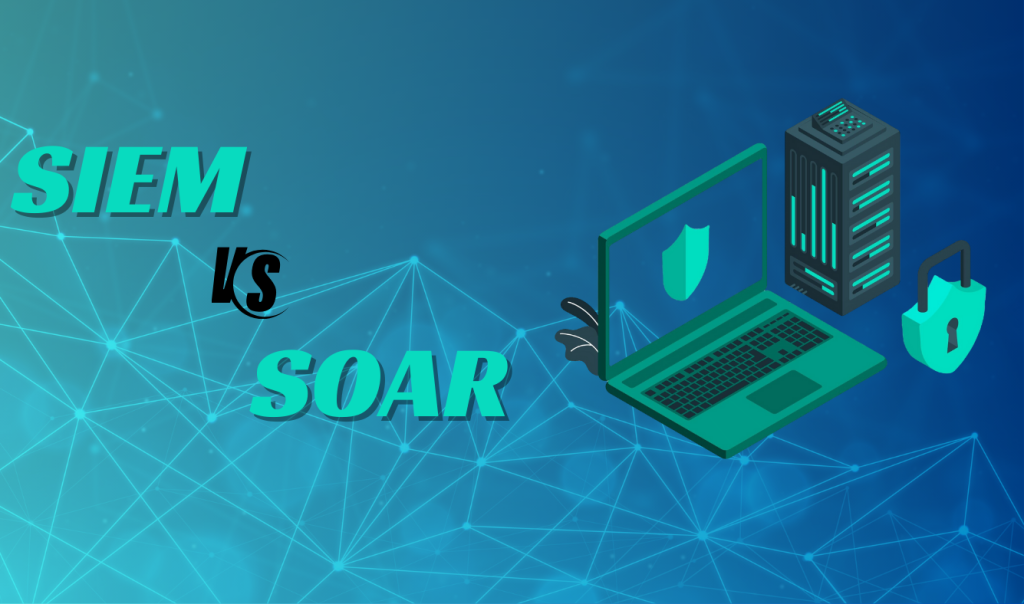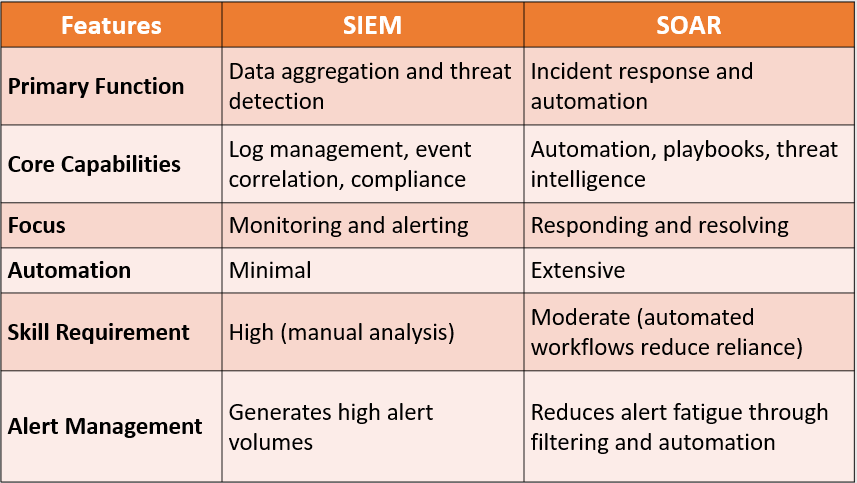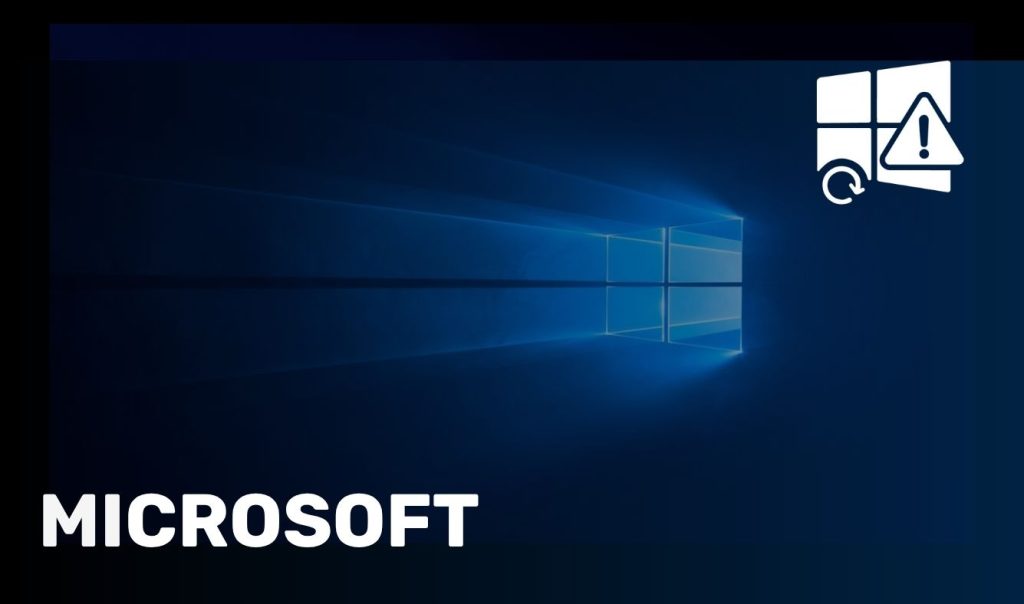As cyber threats grow increasingly sophisticated, organisations are turning to advanced technologies to safeguard their networks and data. Two critical tools in the realm of Cybersecurity—Security Information and Event Management (SIEM) and Security Orchestration, Automation, and Response (SOAR)—often dominate discussions in security operations. However, these solutions serve distinct purposes, and understanding the differences between SIEM vs SOAR is vital to optimising your security strategy.
This blog by Creative Networks explores the capabilities, benefits, limitations, and ideal use cases for both SIEM and SOAR, helping you determine which solution aligns best with your security needs.

What is SIEM?
SIEM, or Security Information and Event Management, is a technology designed to provide centralized log management, threat detection, and compliance reporting. By aggregating data from various sources across an organisation’s IT infrastructure, SIEM allows security teams to monitor, analyse, and respond to potential security incidents effectively.
Core Capabilities of SIEM
- Log Aggregation: Collects and centralises logs from firewalls, servers, applications, and other endpoints.
- Event Correlation: Analyses relationships between events to identify patterns indicative of threats.
- Threat Detection: Utilises rule-based systems and anomaly detection to flag suspicious activities.
- Compliance Reporting: Generates detailed reports to meet regulatory requirements such as GDPR, HIPAA, and PCI DSS.
- Real-Time Alerts: Notifies teams of potential threats to enable swift action.
Advantages of SIEM
- Comprehensive Visibility: Provides a centralised view of security data across the IT environment.
- Rapid Threat Detection: Identifies and alerts on suspicious behavior as it happens.
- Regulatory Compliance: Simplifies compliance with automated reporting and log retention.
- Customisable Dashboards: Tailors visualisations to specific organisational needs.
Challenges of SIEM
- Alert Overload: High volume of alerts can lead to fatigue among security teams.
- Complex Implementation: Requires careful configuration and ongoing tuning.
- Resource Intensive: Demands skilled personnel and significant computational resources.
What is SOAR?
SOAR, or Security Orchestration, Automation, and Response, is a technology aimed at automating security operations, streamlining workflows, and enhancing incident response capabilities. SOAR integrates with existing security tools to facilitate efficient incident management, threat intelligence application, and case tracking.
Core Capabilities of SOAR
- Automation of Repetitive Tasks: Handles time-consuming tasks such as alert triaging and log analysis.
- Incident Response Playbooks: Guides security teams with predefined workflows for consistent handling of threats.
- Threat Intelligence Integration: Enriches data with external intelligence for contextual analysis.
- Case Management: Centralises incident details for better tracking and collaboration.
- Workflow Orchestration: Connects disparate tools to streamline processes across the security stack.
Advantages of SOAR
- Enhanced Efficiency: Reduces manual effort by automating repetitive tasks.
- Faster Incident Response: Speeds up threat resolution with predefined workflows.
- Reduced Alert Fatigue: Filters and prioritises alerts, focusing on high-priority threats.
- Scalability: Adapts to growing organisational needs without increasing headcount proportionally.
- Improved Collaboration: Facilitates teamwork through centralised case management and transparent communication.
Challenges of SOAR
- Initial Setup Complexity: Requires significant effort to integrate with existing tools and define workflows.
- Dependency on Integration: Relies on seamless connections with other security tools to achieve its full potential.
- Learning Curve: Teams may require training to fully utilize SOAR’s capabilities.
Key Differences Between SIEM vs SOAR

When to Choose SIEM or SOAR
Ideal Scenarios for SIEM
- Comprehensive Monitoring: SIEM is essential for organisations requiring extensive visibility into their IT environments.
- Regulatory Compliance: SIEM simplifies adherence to standards through detailed logging and reporting.
- Large-Scale Data Handling: Organisations managing vast amounts of log data benefit from SIEM’s data aggregation capabilities.
Ideal Scenarios for SOAR
- Streamlined Incident Response: SOAR excels in automating workflows and expediting threat resolution.
- Resource Constraints: Small or understaffed security teams can leverage SOAR to maximize efficiency.
- Integrated Security Operations: SOAR’s ability to connect disparate tools enhances overall operational effectiveness.
Why Combine SOAR and SIEM?
For many organisations, the optimal solution lies in leveraging both SOAR vs SIEM . By integrating these technologies, businesses can:
- Achieve End-to-End Visibility: From detection to resolution, gain a comprehensive understanding of security events.
- Accelerate Incident Response: Automate workflows triggered by SIEM alerts using SOAR playbooks.
- Enhance Operational Efficiency: Reduce manual workloads and improve resource utilization through automation.
How to Choose the Right Solution
To decide between SIEM, SOAR, or both, consider the following:
- Organisational Needs: Evaluate your security goals and challenges. Do you need better visibility (SIEM) or faster response (SOAR)?
- Resource Availability: Assess your team’s capacity and expertise. Automation through SOAR can alleviate workload.
- Existing Infrastructure: Determine how well the solution integrates with your current tools.
- Budget and ROI: Compare the investment required with the expected improvements in efficiency and security.
Final Thoughts
SIEM and SOAR are indispensable tools in managed Cybersecurity, each addressing specific aspects of security operations. While SIEM focuses on monitoring, detecting, and reporting, SOAR emphasises automating and streamlining incident response. Together, they form a powerful combination that enables organisations to tackle evolving cyber threats with precision and agility.
The choice ultimately depends on your organisation’s unique requirements, maturity level, and long-term security strategy. Whether deploying SOAR vs SIEM, or both, investing in the right technology will enhance your security posture, safeguard critical assets, and ensure operational resilience in an increasingly complex digital landscape.
Contact Creative Networks Today
Navigating the complexities of Cybersecurity can be challenging, but you don’t have to do it alone.
At Creative Networks, we specialise in tailoring SIEM and SOAR solutions to meet the unique needs of businesses like yours. Whether you’re looking to enhance visibility, streamline incident response, or achieve end-to-end security, our experts are here to help.
Contact us today to learn more about how we can empower your security operations and future-proof your organisation against evolving cyber threats.




